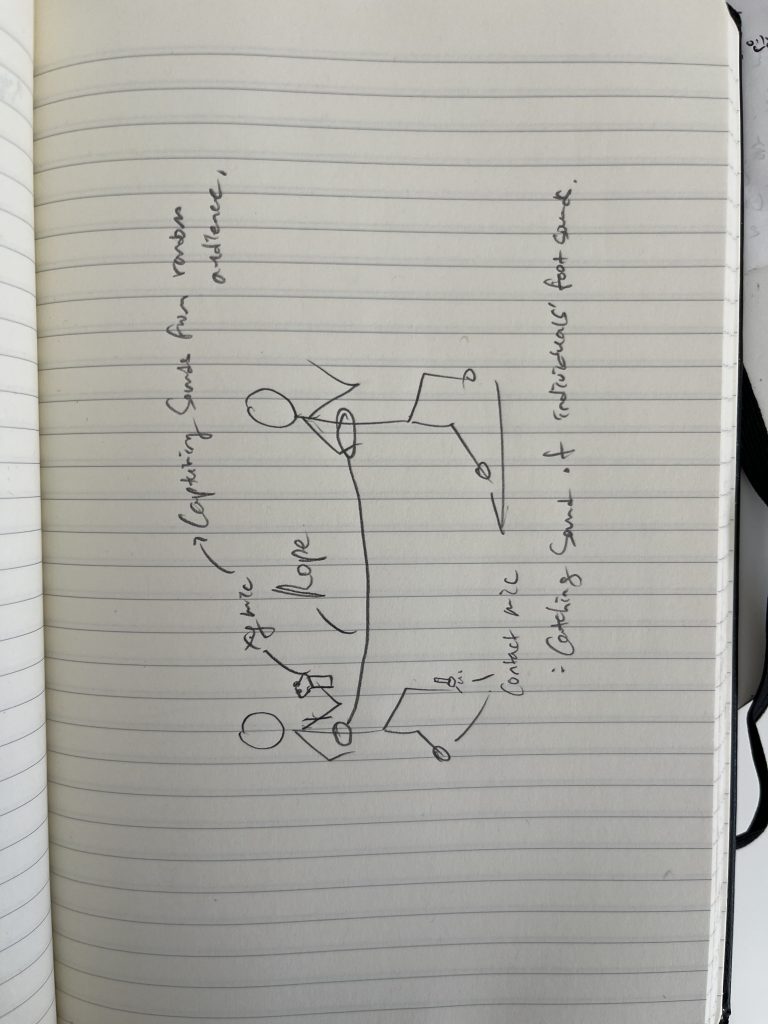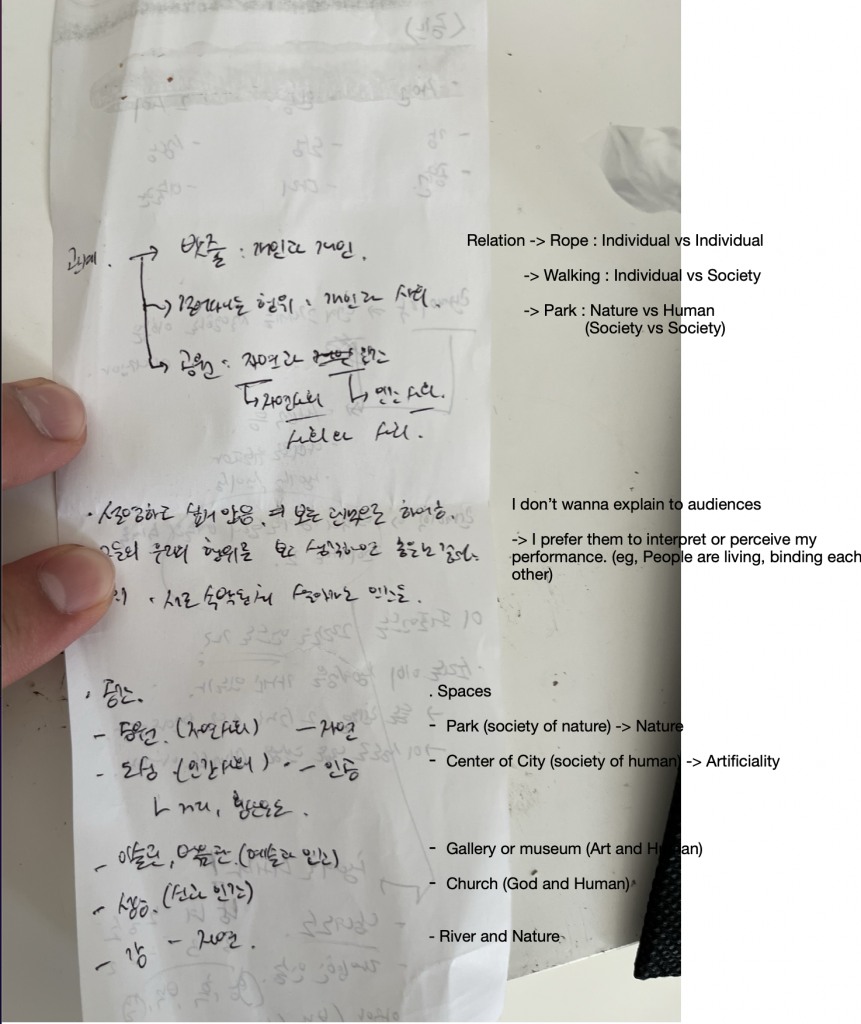I know it’s a bit late to make a concrete plan for this, but nonetheless, since I wanted to create a piece based on my essay, I spent a lot of time thinking about it. First of all, my essay involves relational aesthetics, and once my mind was firmly set on that concept, an idea came to me.

There was an idea I had during my first year that I never tried out: tying two people together with a rope and having them walk around. This idea came from an experience I had when I visited a gallery in Korea with a friend. At that time, I found the crossing sounds of footsteps quite interesting, which led me to think of this concept. Initially, the reason for using the rope was to record those footstep sounds from the center between the two people by tying them together and suspending a microphone in the middle. However, as I expanded the idea, it evolved beyond sound into a performance piece itself.
Now, thinking again about relationality, this idea resurfaced. However, I realized that relational aesthetics is not merely about “relationships” themselves. Rather, it’s an artistic paradigm that evolves through the relationship between art and the audience and transforms the subject. Therefore, using the rope solely to symbolize a “relationship” might result in a superficial outcome that focuses too much on the word “relationship.”

So, I decided to develop the idea further. My initial plan was to perform it with just me and a friend, so I thought about locations that could express various kinds of relationships. I categorized them into three: nature, artificiality, and something in between. For example, rivers and parks symbolize nature; urban areas and bridges symbolize artificiality; and museums (art) and cathedrals (God, religion) represent the in-between. Around this time, I also started questioning whether relational aesthetics truly concerns “relationships” at all. Then I thought: What if the subject of this performance still represents relationships, but the way the performance is conducted reflects relational aesthetics?

Thus, I considered expanding the performance beyond just me and my friend to involve actual citizens.
Public participation would effectively demonstrate the participatory and transitive nature of relational aesthetics. Furthermore, if I worked specifically with participants who share my ethnicity, particularly international students, this could even address the notion of micro-utopias. However, I fundamentally believe that micro-utopias are not ideal. Micro-utopias are based on the premise of exclusion. I believe that a basic utopia would be a condition where exclusion does not exist — where everyone is treated equally as a human being. Therefore, I think it would be better to involve people of various races and ages, to present a mixed and egalitarian society rather than a micro-utopia.
Also, through this performance and video, I hope to encourage people to reflect on relationships and consider whether humans are truly different simply because of differences in skin color or age. In this way, the work could address a “social gap”, showing how art can develop society and help heal people.
Starting next week, together with a friend who agreed to help me with filming, we plan to visit several locations to find suitable filming spots. Then, I will approach potential participants fitting my target demographic.
Although I feel a bit nervous because this is my first time doing a project like this, I believe it will be a fun and meaningful piece.